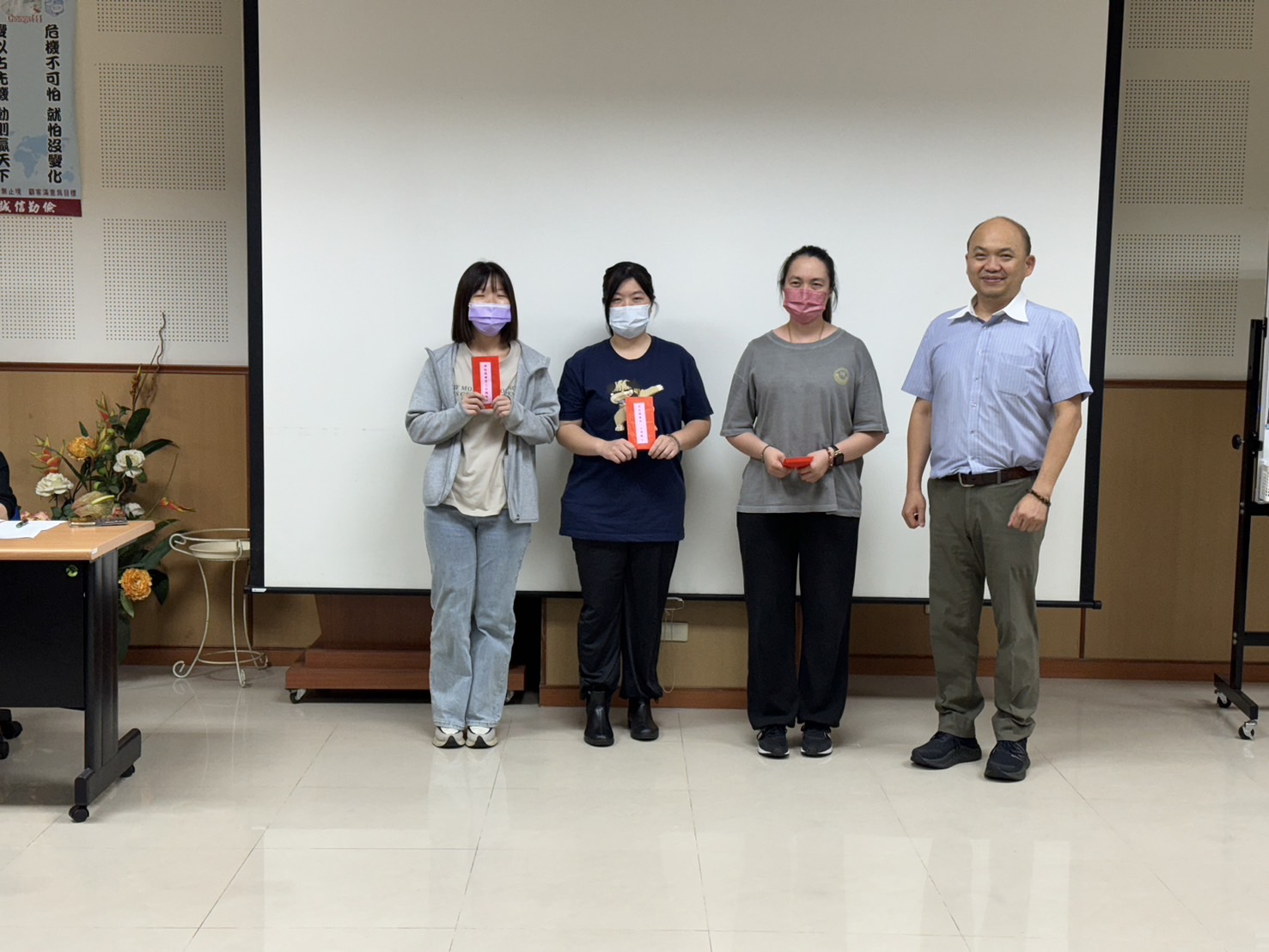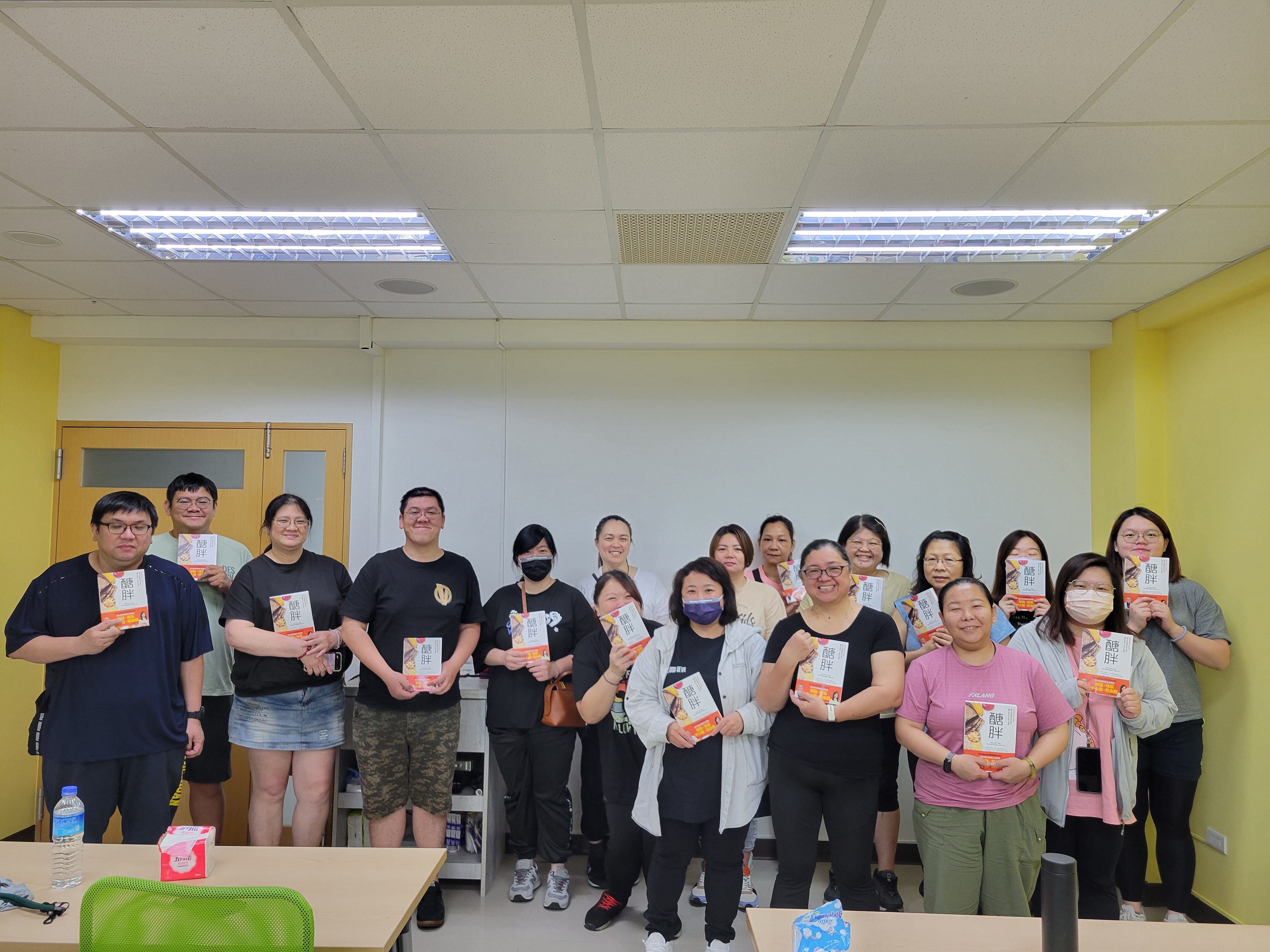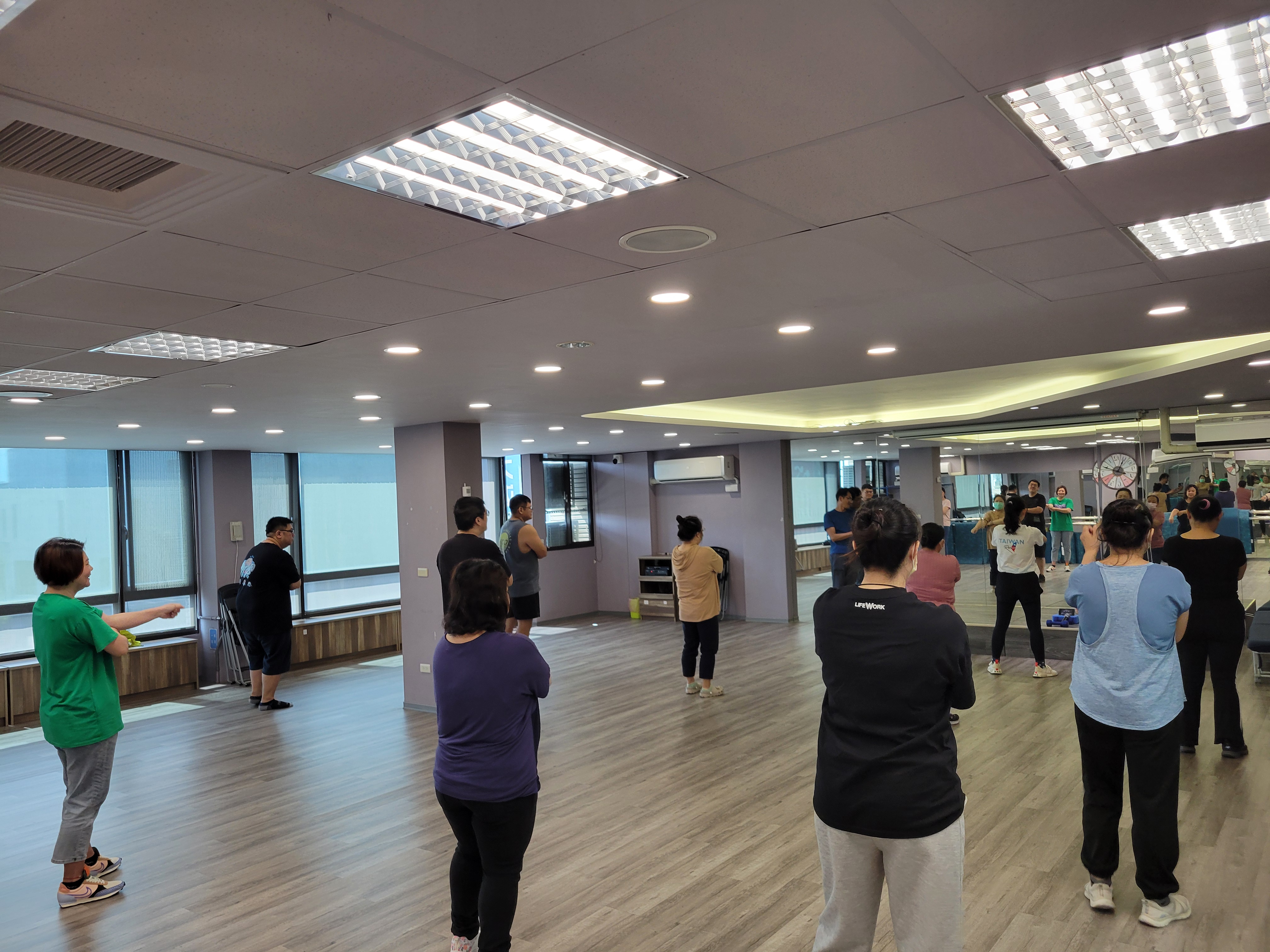Employees
Employees
For access to company regulations, procedures, and other announcements, please refer to the internal service website of the company. If you have any related inquiries or feedback, please contact us via email at: hr@bioteq.com.tw
Welfare Care Measures
1. Welfare Care Measures
(1) Ensuring legal compliance with labor insurance, national health insurance, employment insurance, labor pension schemes, and contributions to both old and new pension systemsㄡ
(2) Providing various leaves and breaks in accordance with the Labor Standards Act and Gender Equality in Employment Act, including special leave, sick leave, marriage leave, paternity leave, bereavement leave, maternity leave, menstrual leave, family care leave, occupational injury leave, overseas return-to-Taiwan leave, and childcare leave.
(3) Establishment of a Labor Welfare Committee in compliance with the law, responsible for organizing activities such as travel, festival gifts, subsidies for weddings and funerals, emergency assistance, social gatherings, recreational activities, and club subsidies to serve and cater to the various life needs of employees.
(4) Insurance Benefits: Apart from enrolling employees in labor insurance and national health insurance, the company also provides group insurance, including term life insurance, accident insurance, accident medical insurance, hospitalization insurance, and occupational accident insurance.
(5) Providing bonuses for Labor Day, Mid-Autumn Festival, and employee birthdays.
(6) Setting up lactation rooms within the factory premises to accommodate employees' breastfeeding needs during working hours.
(7) Setting up lactation rooms within the factory premises to accommodate employees' breastfeeding needs during working hours.
(8) Offering maternity leave without pay, where employees can apply based on their needs. The implementation details for the period 2022-2024 are as follows:
| Applicants | Female | Male | Returning to work | Resigned | On childcare leave |
| 15 | 12 | 3 | 5 | 4 | 6 |
(2) Our company's compensation includes both wages and non-wage subsidies and incentives.
(3) Wages comprise the monthly salary, job allowances, other allowances, meal allowances, shift allowances, and overtime pay according to the Labor Standards Act. We participate in an annual salary survey to obtain market salary trends and adjust salaries based on the company's annual performance and individual performance evaluations.
(4)Non-wage subsidies are provided based on various subsidy schemes, and bonuses from different incentive systems are sourced from the company's profits. When the company generates profits after deducting taxes, losses, dividends, and reserves, a certain percentage is allocated as bonuses. The distribution criteria are based on departmental goals, job roles, and performance evaluations, including:
- Employee remuneration: According to Article 20 of our company's Articles of Association, if the company generates profits for the year, 5% shall be allocated as employee remuneration, and not exceeding 1.6% for director and supervisor remuneration. However, if the company has accumulated losses, a certain amount shall be reserved in advance to cover these losses.
- Festival bonuses and year-end bonuses.
- Business performance incentive bonuses.
- Special incentives for the sales department for securing orders.
- Patent bonuses to encourage colleagues to engage in innovative research and development and apply for patents.
- Awards and recognition for outstanding employees.
- Bonuses for improvement proposals.
- Referral bonuses to encourage colleagues to recommend outstanding talents to join the company.
- Bonuses for various projects.
Our company has established employee retirement-related regulations in accordance with the provisions of the Labor Standards Act and the Labor Pension Act. Employees who are over the age of 55 with at least 15 years of service, over the age of 60 with at least 10 years of service, or over the age of 55 with at least 25 years of service are eligible to apply for retirement. Additionally, the company conducts actuarial calculations annually to ensure adequate provisions for retirement benefits, safeguarding the rights of employees to receive retirement benefits in the future:
1.The retirement fund contributions for employees under the old "Labor Standards Act" are made by the company on a monthly basis, contributing 2% of the total salary. The retirement fund is stored in a designated account under the name of the Labor Retirement Fund Supervisory Committee at Taiwan Bank. The company also complies with the provisions of Article 56, Section 2 of the Labor Standards Act, which states: the employer shall estimate the balance of the labor retirement fund account before the end of each year. As of the end of December 2024, the balance of the old retirement fund is NT$19,994,000, which is sufficient to meet the retirement needs of eligible retirees. In the year 2022, one employee applied for retirement; in the year 2023, two employees applied for retirement; and in the year 2024, three employees applied for retirement.
2.For employees under the new system governed by the Labor Pension Act, retirement benefits are contributed based on the salary classification table according to the employee's average salary, with 6% of the salary contributed monthly towards retirement benefits into individual accounts established by the Bureau of Labor Insurance.
In our company, employee advancement, compensation, promotion, and rewards are based on job category, education and experience, professional knowledge and skills, professional experience, and individual performance, without discrimination based on factors such as age, gender, race, etc. We integrate gender balance into all human resource practices to promote workplace diversity.
Gender-friendly workplace


The proportion of colleagues with disabilities is 1%
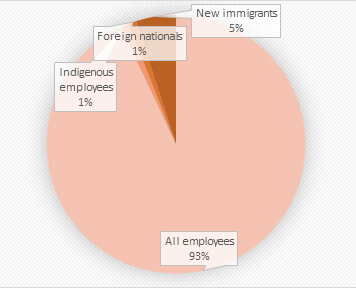
Integration of diverse ethnicities
Talent cultivation
Based on organizational development and annual operational plans, we identify training needs at the organizational, departmental, and individual levels. We then plan various educational and training courses accordingly. Our aim is to enhance the knowledge, skills, abilities, and attitudes of all colleagues through training, education, and development initiatives. By doing so, we seek to improve both individual and team performance, ultimately achieving the goal of sustainable business operation for the enterprise!


Implementation status in the year 2024
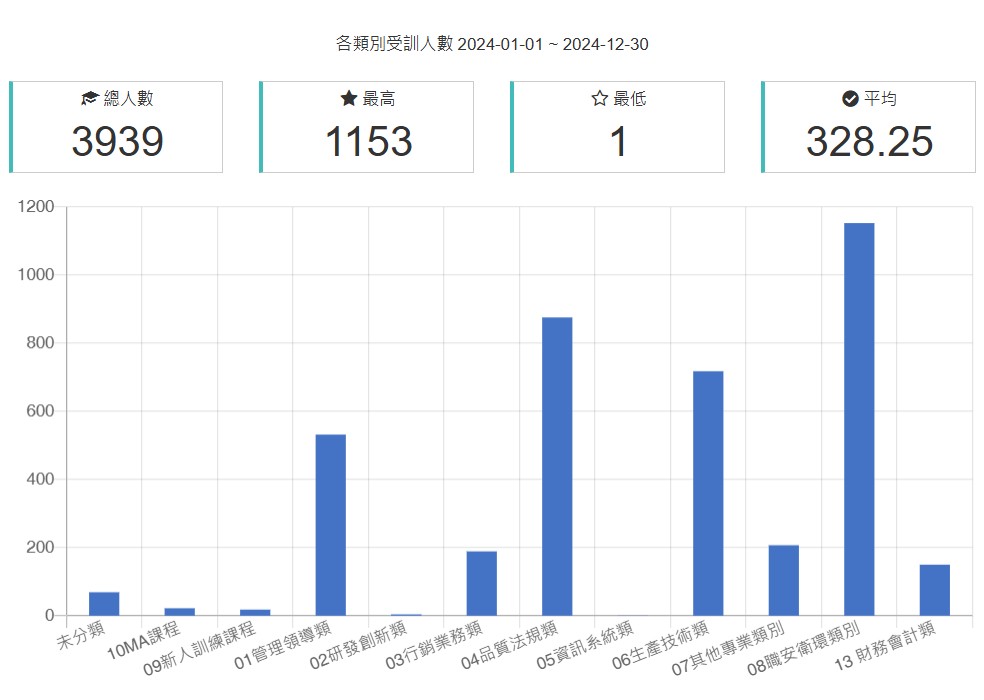
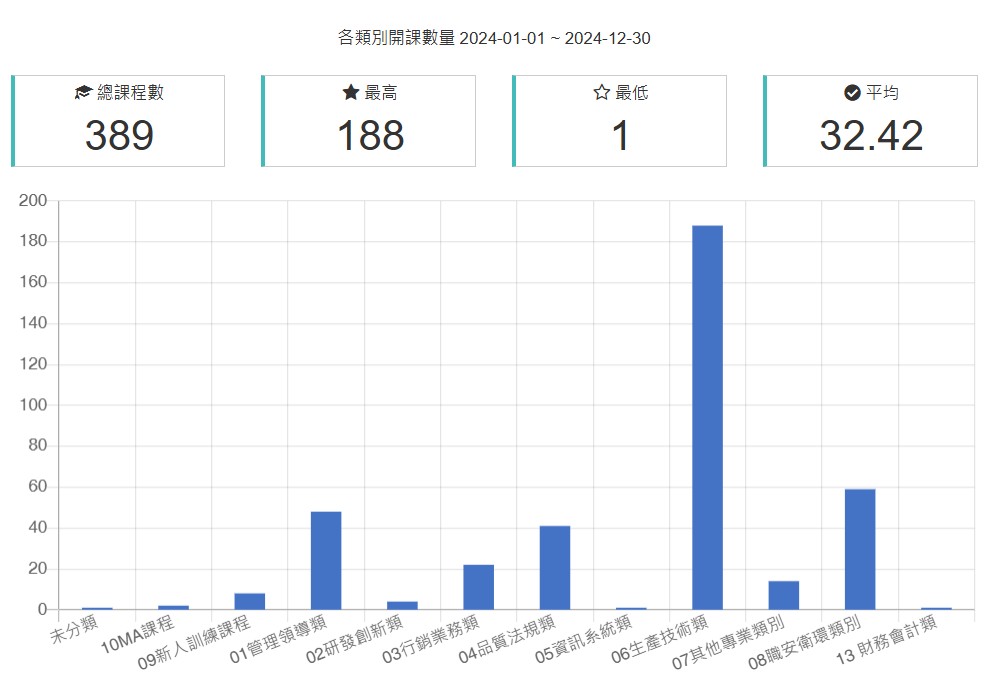
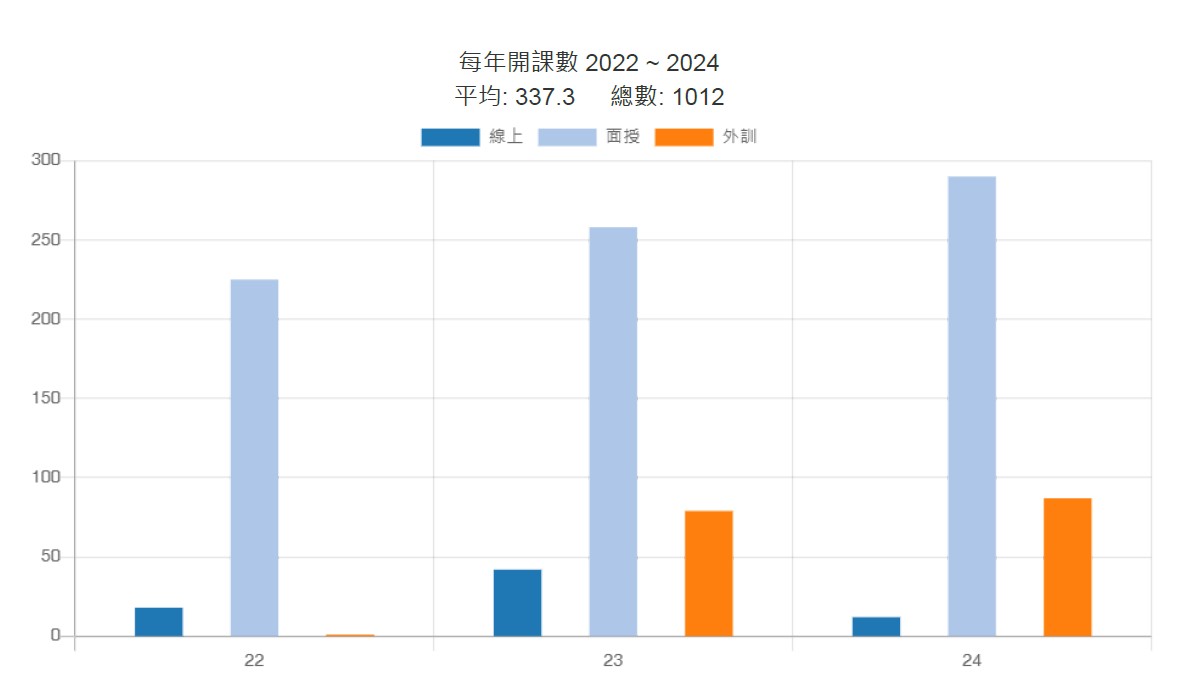
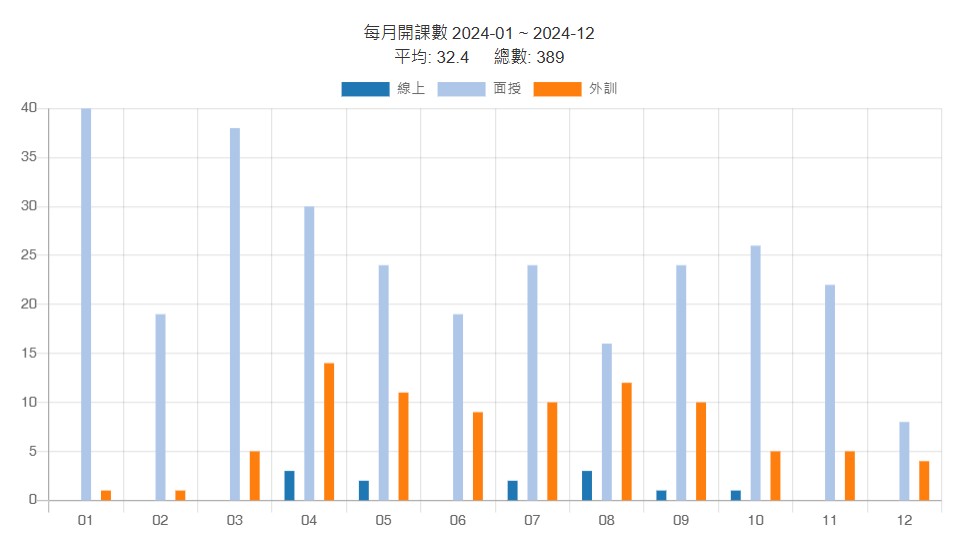
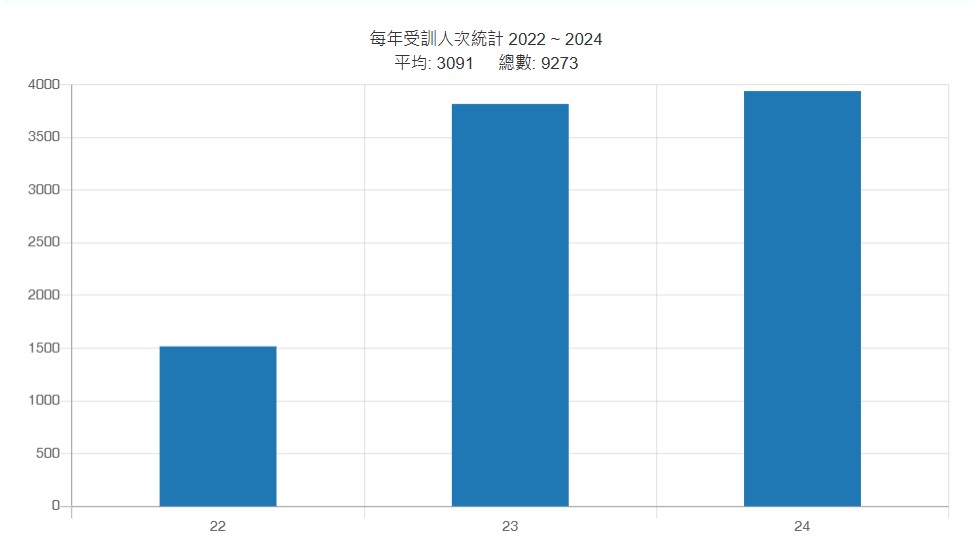
Planning and Implementation of Activities Related to Employee Safety and Health
Employee Safety
(1) The organization has established a labor safety and health management system, comprised of Class A safety personnel, Class B safety personnel, environmental safety personnel, Class A toxic substance specialists, supervisors for organic solvent operations, supervisors for special chemical operations, responsible for the public and personnel safety, environmental protection, waste management, and toxic substance control within the factory. Additionally, a labor safety and health management committee has been formed, and environmental health and safety management meetings are held quarterly to enhance the operation of safety and health within the factory.
(2) Policies covering fire, typhoon, earthquake risks, and public liability insurance have been procured.
(3) According to Article 10 of the Implementation Regulations of Occupational Safety and Health Monitoring under the Occupational Safety and Health Act, environmental monitoring of labor operations is conducted twice a year. Any abnormalities found are promptly rectified to ensure that worker exposure to hazards remains below standard values.
(4)Safety personnel conduct daily inspections of the factory premises and inspect the implementation status of labor and environmental safety in each unit. In the event of hazardous incidents, they may request improvements or halt operations depending on the severity of the situation. They also track the progress of improvements until completion.
(5)A fire safety self-defense team is established, and emergency response procedures are formulated. At least two fire drill training sessions and evacuation drills are conducted annually to reduce the severity of accidents. Fire facilities are inspected annually, and fire equipment is improved and updated as needed. Notifications are provided to the fire department after inspections to ensure compliance.
(6) We have established a hazardous substance emergency response team equipped with sufficient emergency facilities and equipment as required by regulations. This aids in controlling the situation during accidents, reducing property damage to the factory, and minimizing casualties. Monthly maintenance and testing of gas leak detection alarm equipment are conducted, along with backup uninterrupted power supply systems to ensure operations continue in case of power shortages or outages. All preventive and rescue facilities undergo monthly maintenance and annual calibration. Scheduled regular training, drills, and educational outreach are conducted annually to enhance personnel's disaster prevention knowledge and response experience. Educational training subjects include orientation for new employees, hazard awareness, fire safety education, toxic disaster education, first aid training, evacuation training, emergency response procedures, and personal protective equipment training. Effectiveness of education and training is assessed through practical validation. Therefore, annual surprise tests and drills are conducted to confirm whether the content of preventive and rescue training achieves the desired results. Disaster education outreach, combined with preventive and rescue training execution, covers topics such as hazardous substance recognition and operation precautions, personal protective equipment instruction, first aid instruction, disaster prevention training, reporting mechanisms, and evacuation training, targeting all personnel within the factory, with a frequency of once per year. Surprise tests are conducted twice a year, including tabletop exercises and live drills, targeting members of the emergency response team within the factory; live drills are conducted once a year, and depending on the exercise scenario, may involve coordination with external support units such as police, fire, environmental protection, and medical services to strengthen coordination in response to accident scenarios.
(7) All facilities undergo regular inspections to ensure compliance with safety regulations, and personnel are required to wear protective gear as needed to carry out preventive measures. Each unit also compiles safety manuals based on the safety requirements for operating each piece of equipment, and ensures that education and training are implemented accordingly.
(8) We enforce safety education for contractors, requiring them to undergo safety and health education before commencing construction. They must inspect all safety equipment and tools to ensure they are safe for use before starting work. During construction, there are supervisory personnel conducting inspections. If hot work is necessary, prior approval is required, and fire safety measures must be in place before commencement.
(9) Disinfection of the environment is conducted quarterly. Water quality checks are regularly performed on water dispensers. We promote the 6S movement across all departments to ensure safety, tidiness, and cleanliness through self-inspections.
(10)Regular updates on labor safety and health education messages are provided through bulletin boards.
(11)Strict access control measures are in place, with 24-hour security guards responsible for controlling entry and exit through the main gate. Additional personnel control is conducted at each factory area entrance and exit, where card swiping access is required. Surveillance cameras are installed at all entry and exit points for round-the-clock monitoring.
(12)Smoking is prohibited indoors throughout the entire factory premises. There is only one designated smoking area outdoors.
Health Promotion
(1) The factory employs dedicated occupational health service nurses to carry out the following tasks:
- a. Hazard identification and health risk management in the work environment (including special operation health surveillance programs)
- b. Analysis of results from workers' physical (health) examinations
- c. Matching workers with suitable positions and developing return-to-work plans for occupational injuries and illnesses
- d. Management of workers' health checks and job-related abnormalities
- e. Health protection programs for workers under 18 years old and middle-aged to elderly workers
- f. Maternal health protection programs in the workplace
- g. Assessment and management of high-risk worker cases
- h. Prevention of occupational injuries and illnesses, case management, and recordkeeping
- i. Promotion of disease prevention for workers with abnormal workloads
- j. Prevention of workplace misconduct and harm
- k. Prevention of human-factor hazards
- l. Emergency response plans
- m. Health education, hygiene guidance, and health promotion
- n. Research reports on occupational health or occupational hygiene
(3)AED (Automated External Defibrillator) devices are installed in the factory to strengthen emergency medical equipment
(4) A sufficient number of first aid personnel, totaling nine individuals, are trained in accordance with the law. First aid personnel undergo regular training every three years.
(5) Health examinations are conducted for night shift workers and personnel engaged in special operations.
(6)Committed to promoting a healthy workplace, smoking is completely banned indoors, and a designated smoking area is set up outdoors: In 2011, due to its efforts in promoting workplace tobacco harm prevention, the company was awarded the "Healthy Workplace Self-Management Certification - Tobacco Harm Prevention Label" by the National Health Bureau of the Ministry of Health and Welfare. In 2015, it was evaluated and certified for the "Healthy Workplace Certification - Healthy Start Label." In 2018, an extension was applied for, and by the end of 2020, it was re-evaluated and passed the "Healthy Workplace Certification - Health Promotion Label." In 2024, the extension was once again approved, and the certification is valid until 2026.
| Item Number | Item | Number of individuals | Hours worked | Man-hours |
| 1 | Workplace illegal infringement and sexual harassment prevention education and training (supervisors) | 91 | 1.5 | 137 |
| 2 | Workplace illegal infringement and sexual harassment prevention education and training (indirect department colleagues) | 99 | 2 | 139 |
| 3 | Workplace illegal infringement and sexual harassment prevention education and training (direct department colleagues) | 241 | 0.5 | 121 |
| 4 | On-site medical service | 6 | 4 | 24 |
| 5 | Weight loss health promotion program (nutrition + exercise) | 20 | 12 | 130 |
| 6 | Emergency first aid training (CPR + AED) | 125 | 2 | 250 |
| 7 | Health check for special hazardous operations | 12 | 2 | 24 |
| 8 | Self-directed exercise points reward | 40 | 32 | 1,280 |
| 9 | Self-directed exercise points reward | 15 | 12.5 | 188 |
| Total | 649 | 68 | 2,451 |

